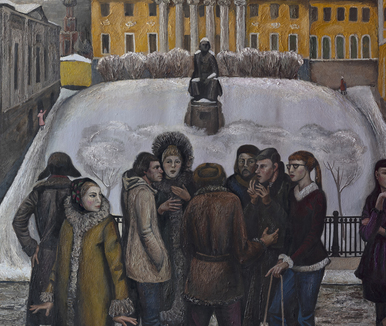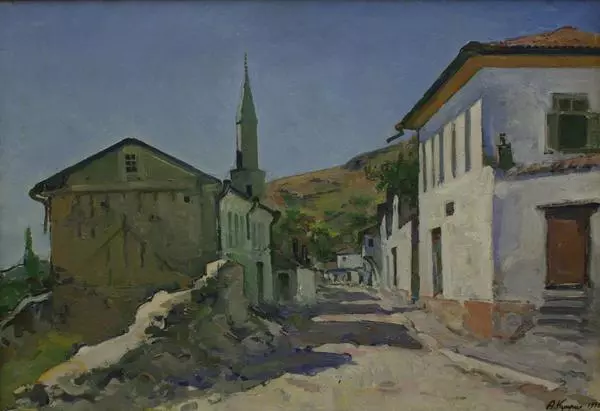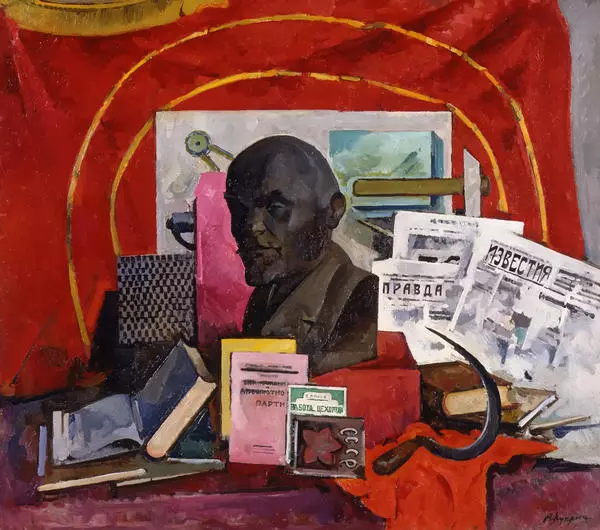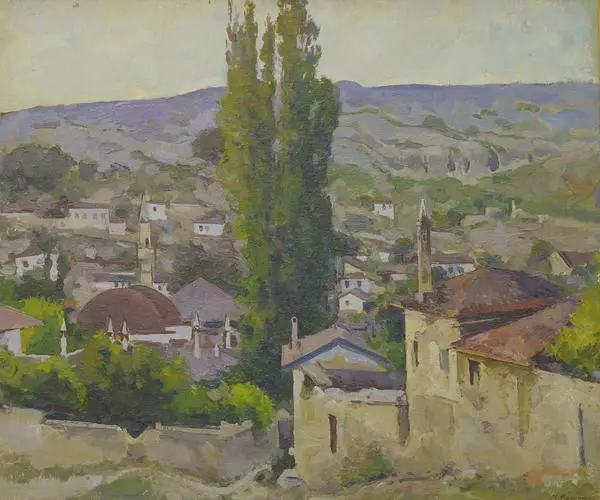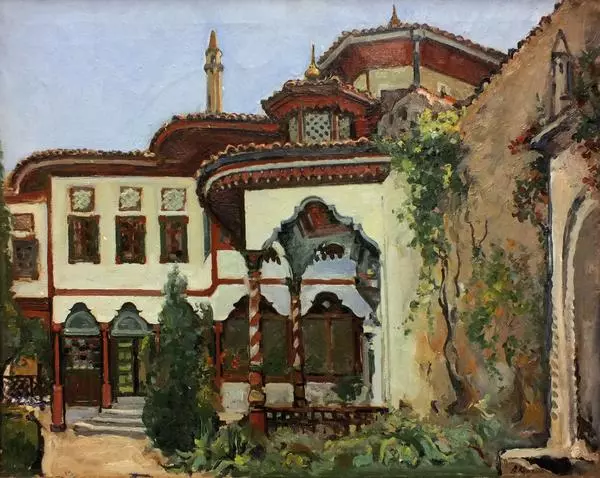Alexander Kuprin created the painting Mallows against the Black Background held by Tyumen Museum and Educational Society. He was born on March 22, 1880, in the town of Borisoglebsk of Voronezh province. During the period 1906 — 1910, he studied in Moscow School of Art, Sculpture and Architecture, where his tutors were Abram Arkhipov, Konstantin Korovin and Leonid Pasternak. In 1910, together with his friends and associates having similar views on the ways of new art development he founded the association Bubnovy Valet (The Jack of Diamonds) and took part in the exhibitions organised by it. The 1910-s are the time of creation of the best Kuprin’s pieces rightly making him a celebrity.
Still life is the style lying in the centre of Kuprin’s work. For him the immobile, ‘dead’ nature stops being that in the Mallows against the Black Background. According to the common knowledge, Kuprin did not aspire to convey the physical diversity of the surrounding world, but he organised his compositions attributing special sense and psychological value to the colour.
One of the experts in Kuprin’s work called his still-life paintings “colouristic dramas”. This painting is one of them. The wine-red and pink mallows, blue cornflowers and a small twig of red arrow-wood are withdrawn from its natural environment.
The flowers are painted with a brisk brush in an energetic manner. It creates the impression of the living matter tightening, flickering and sparking with bright colours. Trembling of the leaves associates unintentionally with tongues of flame or wing strokes. The background tint is not homogeneous — in some places it is condensed to black and in others — it brightens up, especially close to the plants.
An apple and pears are placed near the flowers on a greyish-blue tablecloth. Kuprin depicted them differently: with a black contour making them look artificial versus the realistically painted flowers. The artist used this contour painting technique in many pieces.
The still life by Kuprin Mallows against the Black Background was presented at the first exhibition of Bubnovy Valet association in the winter of 1910 under the title Bunch of Flowers.
Tyumen Museum acquired the painting from the artist’s widow.
Still life is the style lying in the centre of Kuprin’s work. For him the immobile, ‘dead’ nature stops being that in the Mallows against the Black Background. According to the common knowledge, Kuprin did not aspire to convey the physical diversity of the surrounding world, but he organised his compositions attributing special sense and psychological value to the colour.
One of the experts in Kuprin’s work called his still-life paintings “colouristic dramas”. This painting is one of them. The wine-red and pink mallows, blue cornflowers and a small twig of red arrow-wood are withdrawn from its natural environment.
The flowers are painted with a brisk brush in an energetic manner. It creates the impression of the living matter tightening, flickering and sparking with bright colours. Trembling of the leaves associates unintentionally with tongues of flame or wing strokes. The background tint is not homogeneous — in some places it is condensed to black and in others — it brightens up, especially close to the plants.
An apple and pears are placed near the flowers on a greyish-blue tablecloth. Kuprin depicted them differently: with a black contour making them look artificial versus the realistically painted flowers. The artist used this contour painting technique in many pieces.
The still life by Kuprin Mallows against the Black Background was presented at the first exhibition of Bubnovy Valet association in the winter of 1910 under the title Bunch of Flowers.
Tyumen Museum acquired the painting from the artist’s widow.


